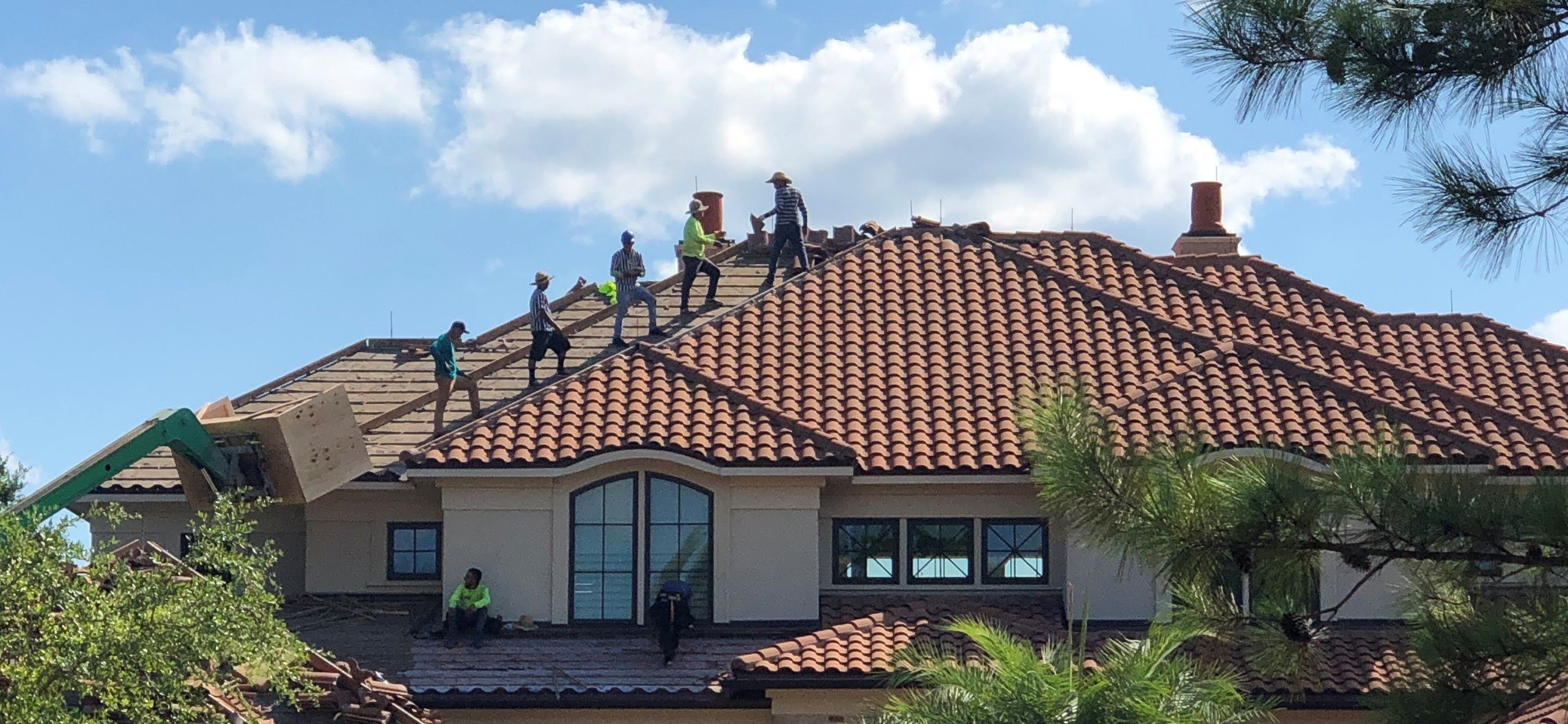The Benefits of Dealing With Gainesville FL Roofing Companies
The Benefits of Dealing With Gainesville FL Roofing Companies
Blog Article
Best Practices for Ensuring Appropriate Roofing Ventilation
Making sure correct roof air flow is important for the durability and performance of a roof system. A balanced intake and exhaust vent ratio, generally 1:300, plays a pivotal function, with consumption vents preferably put at the reduced side of the roof covering for great air access and exhaust vents at the peak for cozy air leave. Regular examinations to identify obstructions and preserve clear air movement are critical. Keeping insulation away from vents is essential to avoid airflow restriction. Recognizing these fundamental components sets the stage for even more thorough understandings right into installation and maintenance techniques that can considerably boost your roof's efficiency.
Understand Ventilation Basics
Effectively understanding ventilation fundamentals is crucial for making certain the long life and efficiency of roof. Reliable ventilation reduces moisture build-up and temperature extremes in the attic room, both of which can result in substantial structural damage in time. A well-ventilated roof covering aids in avoiding usual concerns such as mold and mildew development, wood rot, and ice dams, which can compromise the stability of the roof materials and the underlying frameworks.
The primary objective of ventilation is to help with the activity of air, enabling a constant exchange in between the interior and outside environments. This equilibrium is accomplished through a combination of intake and exhaust vents that interact to preserve optimum airflow. Intake vents, usually situated along the eaves or soffits, allow fresh air to enter the attic room area, while exhaust vents, commonly situated at or near the roof ridge, enable warm, humid air to escape.
Secret factors influencing the efficiency of roof air flow consist of correct positioning, adequate sizing, and making sure that both consumption and exhaust vents are unblocked. Normal evaluation and maintenance are crucial to recognize possible clogs, damages, or inefficiencies in the air flow system, therefore protecting the roof covering's performance and toughness.
Sorts Of Roofing Vents
Roofing system vents play a vital function in preserving reliable attic room air flow and, by extension, the total health and wellness of the roof system. Different types of roofing system vents are readily available, each with special advantages tailored to particular roof demands.

Soffit vents are mounted under the eaves and operate in tandem with roofing system vents to make certain a well balanced consumption and exhaust system. By permitting cooler air to enter from below, soffit vents assist in the expulsion of hot air with top vents. Gable vents, situated on the outside walls of the attic room, offer another effective remedy, particularly in homes with saddleback roofs.
Assess Your Current Air Flow
Next, think about the age and problem of your roofing materials and air flow parts. Older systems might not follow existing building codes or might have worn away in time, lowering their effectiveness. Conduct a detailed examination to recognize any indicators of damage, such as rust, damage, or voids that can jeopardize the system's performance.
Furthermore, measure the attic room temperature and humidity levels. High temperature levels and moisture can indicate inadequate air flow.
Installation Best Practices
Effective installation of roof covering air flow systems is extremely important for making sure ideal efficiency and durability. Appropriate setup starts with comprehending the particular air flow needs of the roof covering and the building it covers. This entails determining the correct proportion of consumption to wear down vents, normally adhering to the 1:300 guideline, which stipulates one square foot of ventilation for every 300 square feet of attic floor room.

The placement of vents is similarly critical. Intake vents must be set up at the roof covering's reduced side, usually in the soffits, to allow great air to enter. Exhaust vents, on the various other hand, need to be mounted near or at the roof's height to promote the departure of warm, damp air. This develops a natural airflow that aids preserve temperature and wetness equilibrium within the attic space.
Seal all vent connections carefully to look what i found stop air leaks and potential water infiltration. Usage top quality materials and adhere to manufacturer guidelines to make sure sturdiness and effectiveness. Furthermore, integrating ridge vents with baffles can considerably enhance air movement efficiency by preventing wind-driven rain and snow from getting in the attic.
Eventually, precise installment of roof covering air flow systems alleviates potential issues such as mold development, ice dams, and structural damages, making certain the roof's integrity and the structure's overall health and wellness.
Normal Upkeep Tips
Uniformity in maintenance practices is essential to ensuring the long-term performance of roof covering ventilation systems. Regular evaluations are crucial, ideally carried out biannually-- in the spring and fall. During these examinations, ensure that vents are devoid of particles, nests, and various other blockages that can hamper air flow. Look for any type of indications of dampness buildup or mold, as these can indicate incorrect air flow or leaks (gainesville fl roofing companies).
Cleaning up the vents is one more necessary task. Make use of a soft brush or a vacuum to remove dust and particles from intake and exhaust vents. Beware not to harm the vent displays or louvers throughout the process. Furthermore, evaluate the attic room area for any indicators of water damages, which might jeopardize the honesty of the roof.
Appropriate insulation is just as important. Guarantee that attic room insulation does not obstruct the vents, as this can drastically restrict air flow. If any kind of insulation has shifted or worked out, reposition or replace it to keep an efficient obstacle.
Finally, replace any type of harmed or missing out on elements promptly. Damaged vents, fractured roof shingles, or scrubby blinking can all add to insufficient ventilation and ought to be addressed without delay. Routine maintenance makes certain that the roof covering ventilation system works efficiently, therefore prolonging the lifespan of the roofing system itself.
Conclusion
Guaranteeing proper roofing air flow is critical for preserving the effectiveness and toughness of a roof. Adherence to the 1:300 consumption and exhaust vent proportion, coupled with the tactical about his positioning of vents, is important. Normal biannual assessments, particles cleansing, and ensuring insulation does not obstruct air movement are vital techniques. Applying these finest techniques will certainly cultivate a well-ventilated roof, consequently alleviating possible problems connected to moisture build-up and excessive warm, eventually lengthening the roof covering's life-span.
A well balanced consumption and exhaust vent proportion, generally 1:300, plays a pivotal role, with consumption vents ideally placed at the reduced side of the roof covering for amazing air entrance and exhaust vents at the top for cozy air leave. Intake vents, usually situated along the soffits or eaves, enable fresh air to enter the attic space, while exhaust vents, often situated at or near the roof ridge, allow hot, moist air to leave.
Soffit vents are mounted under the eaves and work in tandem with roofing vents to make certain a balanced intake and exhaust system. By permitting cooler air to go into from below, soffit vents facilitate the expulsion of hot air through upper vents. Adherence to the 1:300 intake and exhaust vent proportion, paired this link with the strategic positioning of vents, is crucial.
Report this page